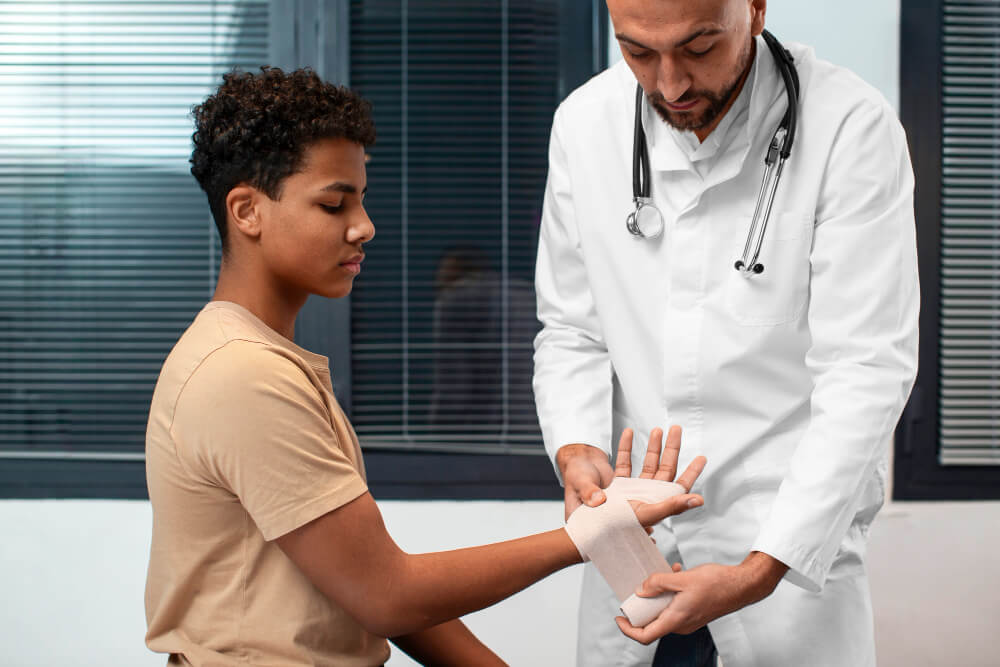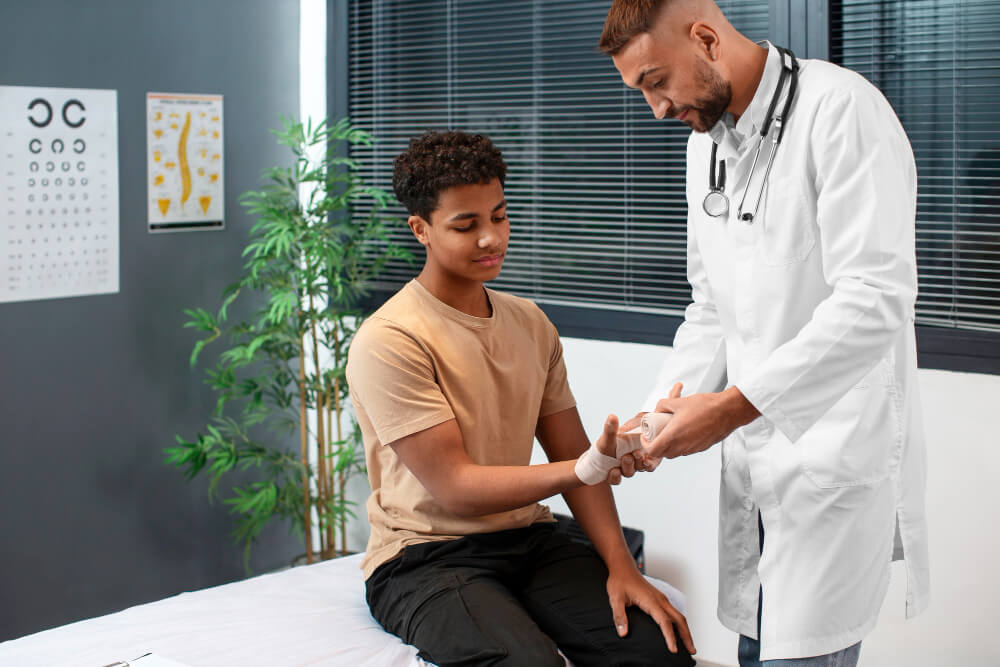Urgent Care Clinics: Expert Scrapes and Cut Care
Scrapes and cuts are common injuries that can occur in various settings, from the home to the workplace. While many minor scrapes and cuts can be treated at home, seeking medical attention can be beneficial to ensure proper wound care and prevent complications. Urgent-care clinics are equipped to handle a variety of scrapes and cuts, providing timely evaluation, treatment, and advice.

Common Types of Scrapes and Cuts
Scrapes and cuts can vary in severity, but they typically involve damage to the skin. Common types of scrapes and cuts include:
- Abrasions Shallow wounds that scrape away the top layer of skin.
- Lacerations Cuts that extend through the skin and may involve deeper tissues.
- Puncture Wounds Deep wounds caused by a sharp object penetrating the skin.
- Avulsions Wounds in which a piece of skin or tissue is torn away.
- Blisters Fluid-filled bubbles that may develop on the skin.
When to Seek Medical Attention for Scrapes and Cuts
While many minor scrapes and cuts can be treated at home, it is important to seek medical attention if:
- The wound is deep or gaping.
- The wound is bleeding heavily and you cannot control the bleeding.
- There is a foreign object embedded in the wound.
- The wound is on your face, neck, or a joint.
- You have a history of diabetes, blood clotting disorders, or a weakened immune system.
- You have not had a tetanus shot within the past 10 years.
The Role of Urgent Care Clinics in Scrape and Cut Treatment

Urgent-care clinics can provide comprehensive care for a variety of scrapes and cuts. They can:
- Clean and Debride the Wound Remove dirt, debris, and any foreign objects from the wound.
- Control Bleeding Stop bleeding by applying direct pressure.
- Assess for Infection Evaluate the wound for signs of infection, such as redness, swelling, warmth, or pus.
- Suturing or Stitching Close wounds that are deep or gaping with sutures or stitches.
- Staples Use staples to close larger wounds.
- Adhesive Strips Apply adhesive strips to close smaller wounds.
Wound Care at Home
If your scrape or cut is minor, you can treat it at home by following these steps:
- Clean the Wound Gently wash the wound with soap and water.
- Apply Pressure Apply direct pressure to the wound to control bleeding.
- Cover the Wound Cover the wound with a clean bandage.
- Monitor for Signs of Infection Watch for signs of infection, such as redness, swelling, warmth, or pus.
- Seek Medical Attention If you notice any signs of infection, seek medical attention immediately.
Preventing Infection
Proper wound care is essential for preventing infection. Be sure to:
- Keep the Wound Clean Change the bandage daily and keep the wound clean and dry.
- Avoid Touching the Wound Avoid touching the wound with your fingers to prevent infection.
- Complete the Antibiotic Course If your doctor prescribes antibiotics, take the entire course of medication, even if your symptoms improve.
When to Follow Up with Your Doctor
It is important to follow up with your doctor if your wound does not heal properly or if you experience any signs of infection.
Signs of Infection Signs of infection include:
- Increasing pain or redness
- Swelling
- Warmth
- Pus
- Fever
Scrapes and cuts are common injuries that can be treated effectively at urgent-care clinics. By seeking medical attention when necessary and following proper wound care guidelines, you can reduce the risk of complications and promote healing.
Contact our Urgent-care clinic for Effective management of Scrapes and cuts +1 (432) 322-8675 Or Visit us https://sccodessa.com/
